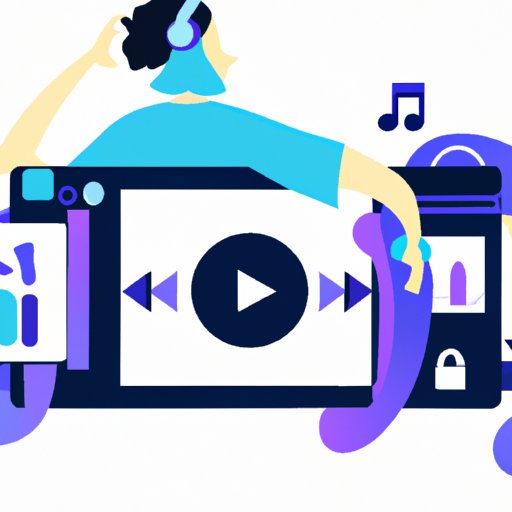Introduction
A music streamer is a device or application that allows you to listen to music from streaming services. Streaming services provide access to a wide range of music, from popular hits to obscure indie tracks. With a music streamer, you can easily access your favorite songs and albums without having to purchase or download them. The benefits of streaming music include convenience, cost savings, and access to a larger selection of music than what’s available on traditional radio or CDs.
However, there are some drawbacks to streaming music. You may experience lower sound quality than with physical formats, and it can be difficult to find rare or obscure tracks. Additionally, many streaming services require a monthly subscription fee.

What to Consider When Choosing a Music Streamer
When selecting a music streamer, there are several factors to consider. First, you’ll need to decide which type of device or application will best meet your needs. There are several different types of music streamers, including dedicated devices, web-based applications, and mobile apps.
You’ll also want to consider the features offered by the device or app. Popular features include playlists, artist-based radio stations, and recommendations based on your listening habits. Additionally, you’ll want to think about the cost of the streaming service and any additional fees for premium features.

How to Set Up a Music Streamer
Once you’ve chosen a music streamer, setting it up is relatively simple. If you’re using a dedicated device, such as a Sonos speaker, you’ll need to plug it into power and connect it to your home Wi-Fi network. For web-based or mobile apps, you’ll need to download the software and create an account. Once you’ve done this, you’ll be able to start searching for and playing music.
You may also need to configure settings on your device or app. This could include specifying a default streaming quality, setting parental controls, and linking your accounts to other streaming services. Depending on the device or app, you may also be able to customize the user interface.
Pros and Cons of Music Streaming
Like any technology, streaming music has both advantages and disadvantages. On the plus side, it’s convenient, easy to use, and often much cheaper than buying physical copies of music. Additionally, streaming services offer access to a vast library of songs, including hard-to-find tracks. Finally, streaming services allow you to discover new music through personalized recommendations and radio stations.
On the downside, streaming music can be more expensive than buying CDs or downloading MP3s. Additionally, streaming services often compress audio files, resulting in lower sound quality than with physical formats. Some services also limit the number of times you can listen to a song or album.
Music Streaming Trends
The music streaming industry is constantly evolving. Subscription services, such as Spotify and Apple Music, have become increasingly popular in recent years. These services offer access to millions of songs for a flat monthly fee. They also often include exclusive content and bonus features, such as early access to new releases.
Another trend is the integration of streaming services with social media platforms. Many services now allow users to share their favorite songs and albums with friends, creating a more interactive listening experience. Additionally, streaming services are starting to offer immersive experiences, such as virtual concerts and interactive lyric videos.
Conclusion
Music streaming is a convenient and cost-effective way to access a vast library of songs. When choosing a music streamer, consider the type of device or app, features offered, and cost. Setting up a music streamer is generally straightforward, and once it’s set up, you can start enjoying your favorite tunes. However, there are some drawbacks to streaming music, such as lower sound quality and limited availability of certain tracks. Trends in music streaming include subscription services, exclusive content, and social media integration.
(Note: Is this article not meeting your expectations? Do you have knowledge or insights to share? Unlock new opportunities and expand your reach by joining our authors team. Click Registration to join us and share your expertise with our readers.)
